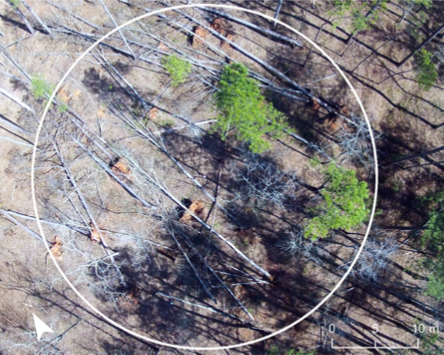Jeffery B. Cannon, Suzanne K. Henderson, Michael H. Bailey, Chris J. Peterson
Many studies of ecological disturbance highlight the unexpected impact that compounded disturbances have on communities. One of the well-studied mechanisms by which forest wind and fire disturbances interact is that wind damage increases flammable fuels—amplifying the effects of fire—leading to unexpected changes in vegetation composition. However, wind disturbance may also buffer the effects of fire through mechanisms such as disrupting fuel continuity. The extent to which wind and fire disturbances buffer, or reduce, the magnitude of ecological change has been less well studied. In this study, we winched trees in a Pinus taeda L. forest to simulate wind damage in experimental plots and combined this treatment with prescribed fire. This design allowed investigation of how forest regeneration responds to combinations of wind and fire disturbance, with particular emphasis on whether disturbance interactions were amplifying or buffering. We also tested for evidence of two mechanisms of disturbance interaction that are expected to buffer the cumulative ecological impact of wind and fire disturbances, testing (1) whether wind damage increased resprouting response following fire and (2) whether seedlings on tip-up mounds were protected from fire. We identified evidence for a combination of disturbance interactions occurring in both an amplifying direction (e.g., rapid recruitment and establishment of Rhus copallinum) as well as interactions occurring in a buffering direction (e.g., increased resilience in re- sprouting saplings in winched plots). Such varying responses may lead to a heterogeneous mixture of amplifying and buffering effects following compounded disturbances, such that at the stand scale, the aggregate re- generation response of two disturbances is the net effect of these individual interaction mechanisms. The results of this study highlight that mechanisms of disturbance interactions may vary spatially and temporally and may be best understood by considering factors such as disturbance severity, species life history traits, and timing between disturbances.

